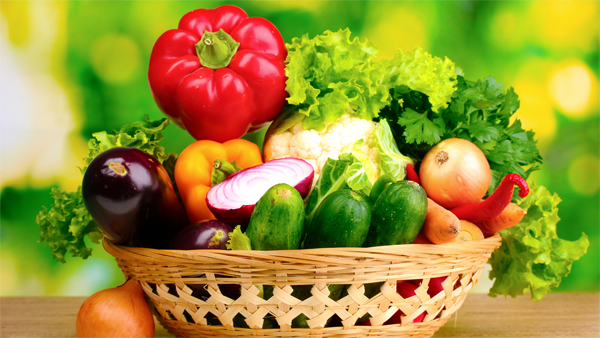Since eating vegetables daily can be such a seemingly unpleasant challenge, food and nutrition experts have developed many tantalizing and nutritious recipes to help us all increase vegetables in the daily diet. Below is just five of the plethora of tips to do so.
1. Include them in a morning smoothie. There are many recipes that include vegetables in delicious and nutritious beverage treats that can be part of breakfast or a snack. A perfect example is the Kale, Pineapple & Banana Smoothie. All it takes is 2 cups of chopped kale, 1½ cups chopped pineapple, 1 ripe banana, about ½ cup of milk and some kind of flavoured essence. This recipe could have also substituted spinach for kale. If you want something with a brighter colour try blending 1 cup beets, with ½ freshly squeezed orange juice, 2 oz yogurt, 2 tbsp oats and some strawberries (optional).
2. Include them as daily snacks. Vegetable Medley Sticks can be munched on throughout the day, once prepared beforehand. Simply gather your blanched broccoli, cauliflower and carrots. Then cut them into rectangular sticks. You can eat them with your favourite salad dressing, sour cream or melted cheese as a dip. Or you could cube them and add pieces of apples and nuts as well.
3. Make appealing salads to go. This is one of the newest health trends where salads are made attractively in convenient ready-to-go containers like mason jars designed to keep salads in small easy to eat portions, and to maintain freshness. The salads are placed in the jar in layers, with the dressing in first at the bottom, followed by vegetables that are not susceptible to water such as chopped broccoli, cauliflower, cucumbers, tomatoes, and carrots. Then you can add the leafy vegetables at the top such as lettuce, cabbage, spinach and kale. If desired, you can add protein foods, nuts or fruits as the layer just before the leafy vegetables at the top.
4. Add vegetables to entrees and side dishes. Chop some carrots, string beans, celery, and egg plants and add them to a chicken, pork or beef stew close to the end of cooking; or roast some peppers, carrots, onions, celery, eggplant and tomatoes on a stick, with bits of chicken, pork, or beef, and top off with cheese to make tantalizing kebabs.
You can also add cooked callaloo, spinach, pumpkin, carrots, corn and mixed vegetables to accompany dishes like rice, pasta, cubed potatoes, yams or any other ground provisions.
For sandwiches, add at least ½ cup chopped leafy and shredded vegetables with a teaspoon of mayonnaise or salad dressing to flaked tuna, chopped cooked chicken or diced eggs, then lay this mixture between 2 or 3 slices of whole grain bread and enjoy.
5. Add them in deserts. Carrot cakes, pumpkin pies and sweet potato puddings are some traditional treats. There are many other recipes from food experts that combine other unconventional ingredients to make delicious and healthy treats. For example roasted beets in chocolate pudding cakes, kale in carrot muffins, zucchini in coconut chocolate cookies and eggplant in brownies, to name a few.
Now it’s time for you to get creative for health. Experiment and develop your unique recipes that increase vegetables in your daily diet!
Read This Next: A Guide to Proper Food Safety and Hygiene
Photo credit: Thinkstock


